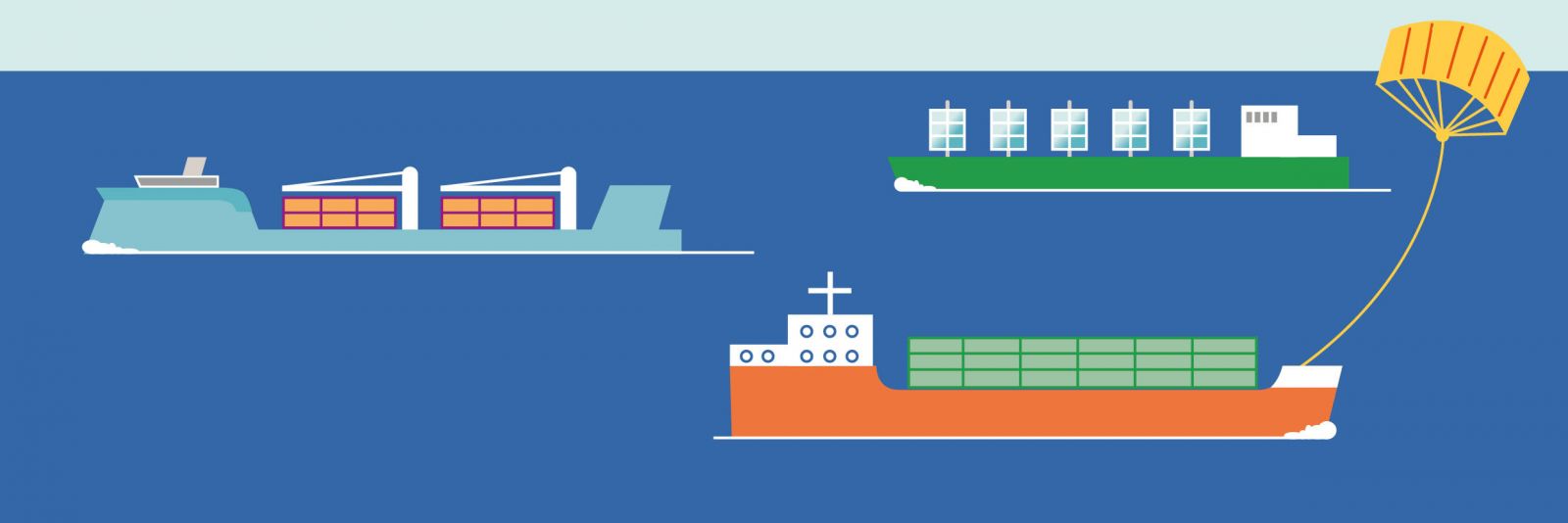Expert groups convene to begin first round of discussions for the development of new Criteria

Climate Bonds convened the expert groups for new Shipping Criteria. Technical Working Group (TWG) and Industry Working Group (IWG) representing a wide range of academic, technical and industry expertise from around the world, kicked-off their opening meetings at the end of March.
The TWG will meet on a monthly basis to develop criteria that low carbon shipping-related investments must meet if they are to be certified under the Climate Bonds Standard. The decisions made by the TWG will be reviewed by the IWG, which will apply its industry expertise to verify the usability and effectiveness of the proposed criteria.
The Criteria will allow for Certification of green bonds and other debt instruments under the Climate Bonds Standard. Once the Groups develop the Criteria it will go through public consultation before release subject to the Climate Bonds Standard Board* approval.
Shipping Industry Mitigation
Maritime shipping is responsible for 90% of international transport, emitting around 940 million tonnes of CO2 annually and is responsible for about 2.5% of global greenhouse gas (GHG) emissions (3rd IMO GHG study).
A high increase in maritime shipping levels would result in a similar increase in CO2 emissions and a much higher share of the global emissions. The 3rd IMO study has been predicted that CO2 emissions from shipping will be 50-250% higher in 2050 than in 2012, based on the assumption of very steep rises in transport demand. Given such a steep increase and a lack of action, the share of global CO2 emissions from maritime shipping will grow drastically.
The industry grew 4% in 2017 and remained on the similar trajectory in 2018, therefore mitigation for the sector goes high on emissions reduction agenda. For the EU, shipping emissions represent around 13% of the overall EU greenhouse gas emissions from the transport sector (2015).
The Shipping Criteria that apply under the umbrella Climate Bonds Standard will be able to provide the sufficient thresholds to allow mitigating of the sector as new capital is raised to fund assets and projects in the industry.
First Shipping Sector Bond
May 2018, we saw the issue of the USD93m first ever green bond from shipping by Japan’s Nippon Yusen Kaisha (NYK) and in our Climate Bonds special briefing paper we provided the environmental credentials of the NYK green bond. The Japanese shipping giant intends to use the proceeds to fund environmentally friendly LNG-fuelled vessels, ballast water treatment systems and scrubbers.
The briefing paper summarised that assets financed by NYK’s bond were the lowest-emission asset option for long-haul shipping at the time, underlying that methane slip is kept to an absolute minimum. Annual reporting, and fuel efficiency optimisation were identified as crucial to providing assurance that the emissions cuts were achieved in practice. The ships are also equipped with SOx scrubber systems that remove sulphur from ship exhaust gases.
Who's saying what?
Andrew Stephens, Sustainable Shipping Initiative, Executive Director and TWG member:
“The Sustainable Shipping Initiative is pleased to be collaborating with the Climate Bonds Initiative on innovative approaches for more sustainable shipping. We need urgent action to drive transformation across and beyond the maritime sector by engaging with key stakeholder groups including investors.”
“Among the many triggers required for change to realise some financial levers, such as certified green bonds, can bring together like-minded stakeholders to accelerate our transition to a climate resistant economy. We are delighted to be supporting the CBI’s work on climate-aligned shipping investments and contributing to the development of criteria for green bonds.”
Anna Creed, Head of Standard, Climate Bonds Initiative:
“The shipping sector criteria will provide a clear assurance mechanism to assess debt capital investments in seaborne freight transport. They will provide investors greater clarity around what’s eligible for green bonds in this vital segment of the transport sector. The aim is to support the flow of capital to the sector and to catalyse decarbonisation of the shipping sector.”
|
Technical Lead Specialists Dr. Tristan Smith, Reader in Energy and Transport at University College London and Dr. Sophie Parker, Principal Consultant at University Maritimes Advisory Services (UMAS) |
|
|
TWG
|
IWG |
|
Aoife O’Leary, Environmental Defense Fund |
Joop Hessels, ABN Amro |
|
Peter Chant, Fremco |
Michael Parker, Citi |
|
Alison Morris, Fremco |
Lars Mac Kay, Danske Bank |
|
Johannah Christensen, Global Maritime Forum |
Knut Elvind Haaland, DNB |
|
Katharine Palmer, Lloyd’s Register |
Ursula Tønjum Børge-Ask, DNB |
|
Michael Adams, Ocean Assets Institute |
Lars Kalbakken, DNB |
|
James Mitchell, Rocky Mountain Institute |
Nina Ahlstrand, DNB |
|
Diane Gilpin, Smart Green Shipping Alliance |
Kristoffer Olsen, ITM Power |
|
David Connolly, Southampton University |
John Kornerup Bang, Maersk |
|
Bruce Anderson, Starcrest Consulting |
Ted Shergalis, Magnuss |
|
Nicole Reconret, Sustainable Shipping Initiative |
Jacob Michaelsen, Nordea |
|
Andrew Stephens, Sustainable Shipping Initiative |
Margrete Ellertsen, Nordea |
|
Sophie Parker, University College London |
Yuichi Shirane, NYK |
|
John Broderick, University of Manchester |
Tomoko Akagi, NYK |
|
|
Christopher Rex, Skibskredit |
|
|
Sara Møller Jensen, Skibskredit |
|
|
Nikos Petrakakos, Seabury Capital |
|
|
Henrik Piper, Silverstream Tech |
The Last Word
Climate Bonds Standard Criteria has been growing by sector gradually and this launch is another successful step in providing the market the tools to enable Paris Agreement aligned investments.
International shipping dominates trade and it is a no brainer to transition this sector from brown-to-green as it is vital for the future low carbon economy.
Climate Bonds Standard Shipping Criteria will consider options in the industry at operational level as well as asset level and establish a clear baseline to measure emissions reductions.
Stay tuned for more developments!
‘Till next time,
Climate Bonds
*Disclosure: The CBSB is an Advisory Committee to the Climate Bonds Board.
